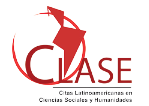Metaphors and knowledge organization: how do they communicate?
DOI:
https://doi.org/10.5433/1981-8920.2017v22n2p99Keywords:
Metaphor, Knowledge Organization, Information Retrieval, Meta-filterAbstract
Introduction; Since Johnson and Lakoff’s (1980) postulation that cognitive organization takes place via metaphors, researchers have been trying to understand how such organization could represent knowledge. Objective: To build a theoretical model of an information retrieval filter – which we call meta-filter. Methodology: The discursive productions of a research group combining beginner and experienced researchers were analyzed. The goal was to identify the metaphors they used to represent their research object and their knowledge field. Results: The analysis revealed the field’s ontological metaphor, that is, the one that guides all representations in the field, as Transport is a systemic network. Conclusions: To know the field’s ontological metaphor, and the subsequent other ones, when associated to Ranganathan’s (1967) classification canons, allowed us to build a theoretical model of an information retrieval filter that could provide greater information retrieval precision in huge databases such as the internet.Downloads
References
LAKOFF, George e JOHNSON, Mark. Metaphors we live by. Chicago: The University of Chicago Press, 1980.
ORRICO, Evelyn Goyannes Dill. Binômio Linguística-Ciência da Informação: abordagem teórica para elaboração de metafiltro de recuperação da informação. IBICT-UFRJ. Tese de Doutorado. Programa de Pós-Graduação em Ciência da Informação, CNPq-IBICT/DEP-UFRJ/ECO, 2001.
PRICE, Dereck J. de Solla. Little science, big science. New York: Columbia University Press, 1965.
RANGANATHAN, Shiyali Ramamrita. Prolegomena to library classification, Bombay: Asia Publishing House, 1967.
Downloads
Published
How to Cite
Issue
Section
License
A revista se reserva o direito de efetuar, nos originais, alterações de ordem normativa, ortográfica e gramatical, com vistas a manter o padrão culto da língua e a credibilidade do veículo. Respeitará, no entanto, o estilo de escrever dos autores. Alterações, correções ou sugestões de ordem conceitual serão encaminhadas aos autores, quando necessário.
O conteúdo dos textos e a citação e uso de imagens submetidas são de inteira responsabilidade dos autores.
Em todas as citações posteriores, deverá ser consignada a fonte original de publicação, no caso a Informação & Informação.














